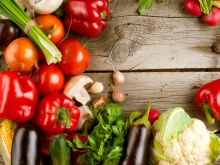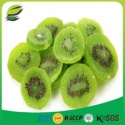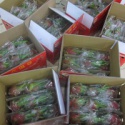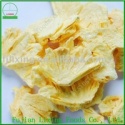Onion
Egypt
Harvesting of the winter onion in Egypt is coming to an end. According to the latest reports, it will be 15-20% more than last year. The quality of the new crop is excellent! Local prices for fresh onions increased three-fold compared to last year due to the devaluation of the Egyptian pound, but the export of onions to the countries of the Middle East remained at the same level.
The vegetables of the winter harvest in Egypt are exported in fresh form, so the dried crushed one became scarce. Prices for Egyptian dried onions soared in March 2017 to $2,900-3,000/ton. On CFR EBP, and made it non-competitive in comparison with Indian dried onions, which prices do not exceed 1400 US dollars per ton.
The sown area under the new summer harvest in Egypt is much larger than last year. If the weather does not fail, and farmers will harvest a good harvest, then the prices for Egyptian crushed onions will drop in June-July 2017.
India
Harvesting the Indian winter (Harif) onion harvest is in full swing. It is expected that the new crop will be 5-10% less than the giant harvest of the last year. The transferred remains of the summer (Rabi) harvest are impressive: India will easily cover the world demand for dried onions until the end of 2017. Current prices for Indian crushed onions at $1,300/ton.
Garlic
In January-February, prices for dried garlic in China remained high but slightly decreased after the Chinese New Year. As soon as the report about the expected increase in the size of the crop in 2017 was 15-20% due to the expansion of the sown areas, the prices for flakes fell by 10% from $7,500/ton in December to the US $6,750/ton in April. However, the market of garlic powder and granules did not follow the downward trend in the market. This is partly due to insufficient reserves of 70 thousand tons of dried garlic against the background of export demand at the level of 95-100 thousand tons, only in the first half of 2017.
Garlic Flakes China
Given the small stocks in cold stores, the prices for garlic powder and granules will remain at the current high level until June 2017, until the new crop appears on the market. Another important factor in high prices for garlic in China is speculators, private and corporate, who bought fresh vegetable at the end of 2015 before raising prices.
Garlic in China is grown next to peanut and wheat plantations and sometimes crops alternate with each other in the same fields, which leads to the fact that Chinese garlic powder often contains gluten and peanut allergens. Customers are looking for an alternative to Chinese in other garlic-producing countries, such as India. Indian garlic powder is cheaper, slightly darker and is used in the food industry, but carries the same drawback - it can be infected with allergens.
Most likely, the current prices for garlic will change until July 2017, when a new crop appears on the market. Then they will drop slightly. However, the activity of Chinese speculators in buying up fresh garlic and a clear excess of demand over supply will push prices up again in the second half of 2017.
Dried sweet peppers, carrots, leeks
Red pepper in China
The last harvest of red sweet pepper in Inner Mongolia (the main region in China that produces pepper) turned out to be very bad, and prices have risen. Today, flakes of red sweet pepper 9x9 mm offer at $5,400/ton and flakes of green sweet pepper 9x9 mm - 3500 US dollars/ton.
Dried carrots
Harvesting carrots in China is in full swing and, according to reports - farmers will harvest a decent volume. Prices for dried carrots in China have already fallen to $1,700/ton.
Dried Leek
This year, the deficit of dried leeks will remain in China and Poland. Prices for flakes of green and white leeks 9x9 mm today are sold at $4,800/ton. The reserves are minimal, and the situation on the market will not change until the arrival of a new leek crop in October 2017.









